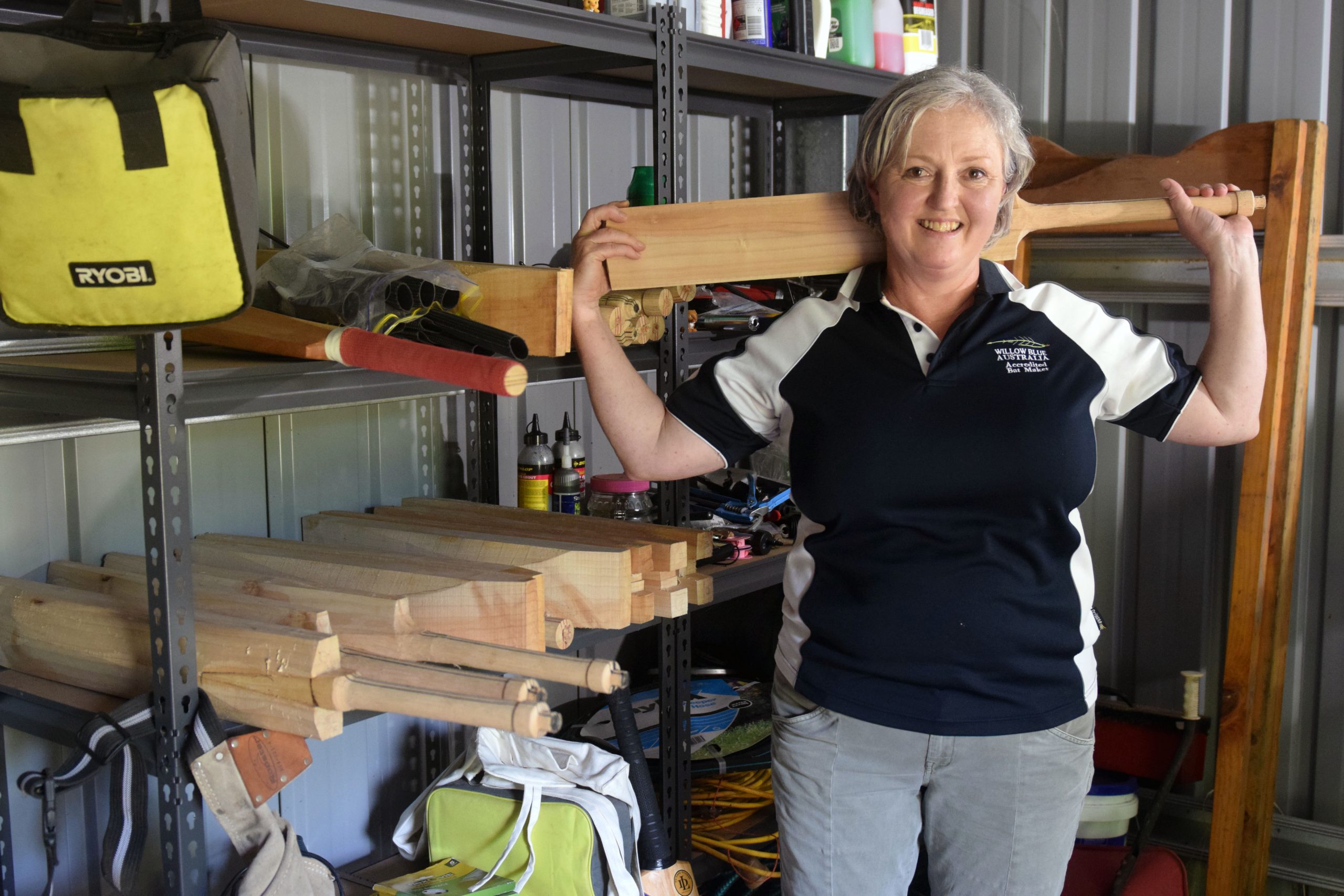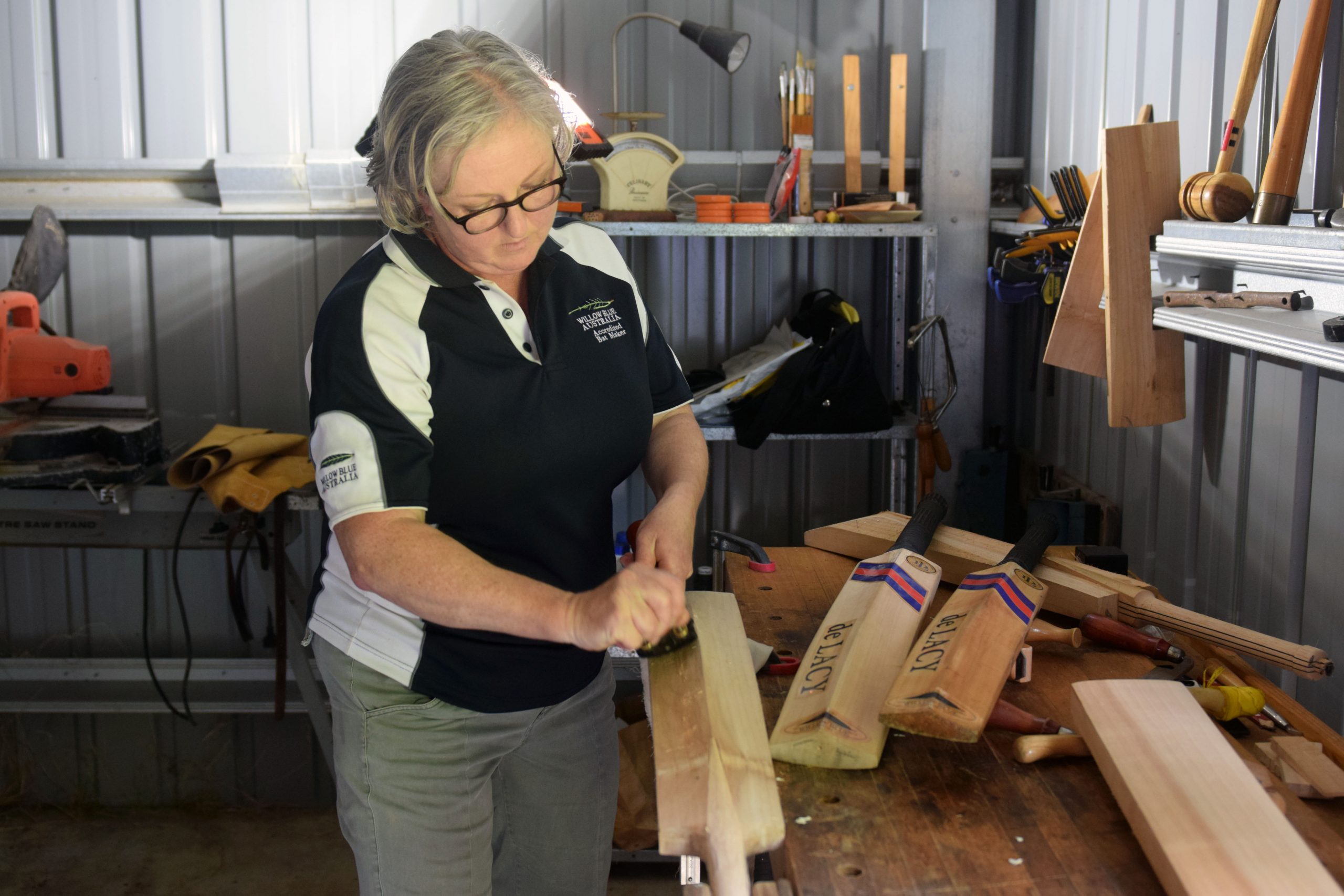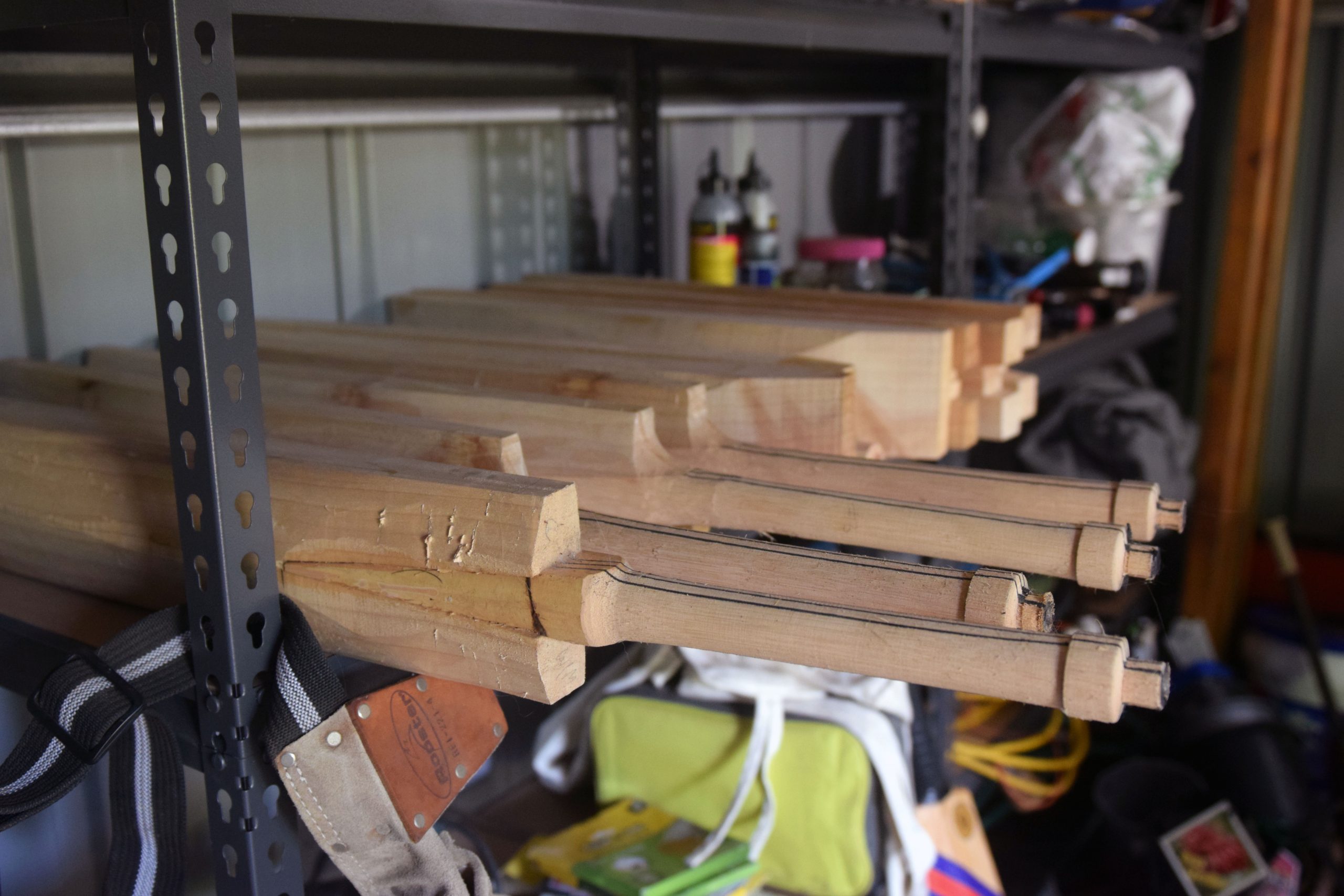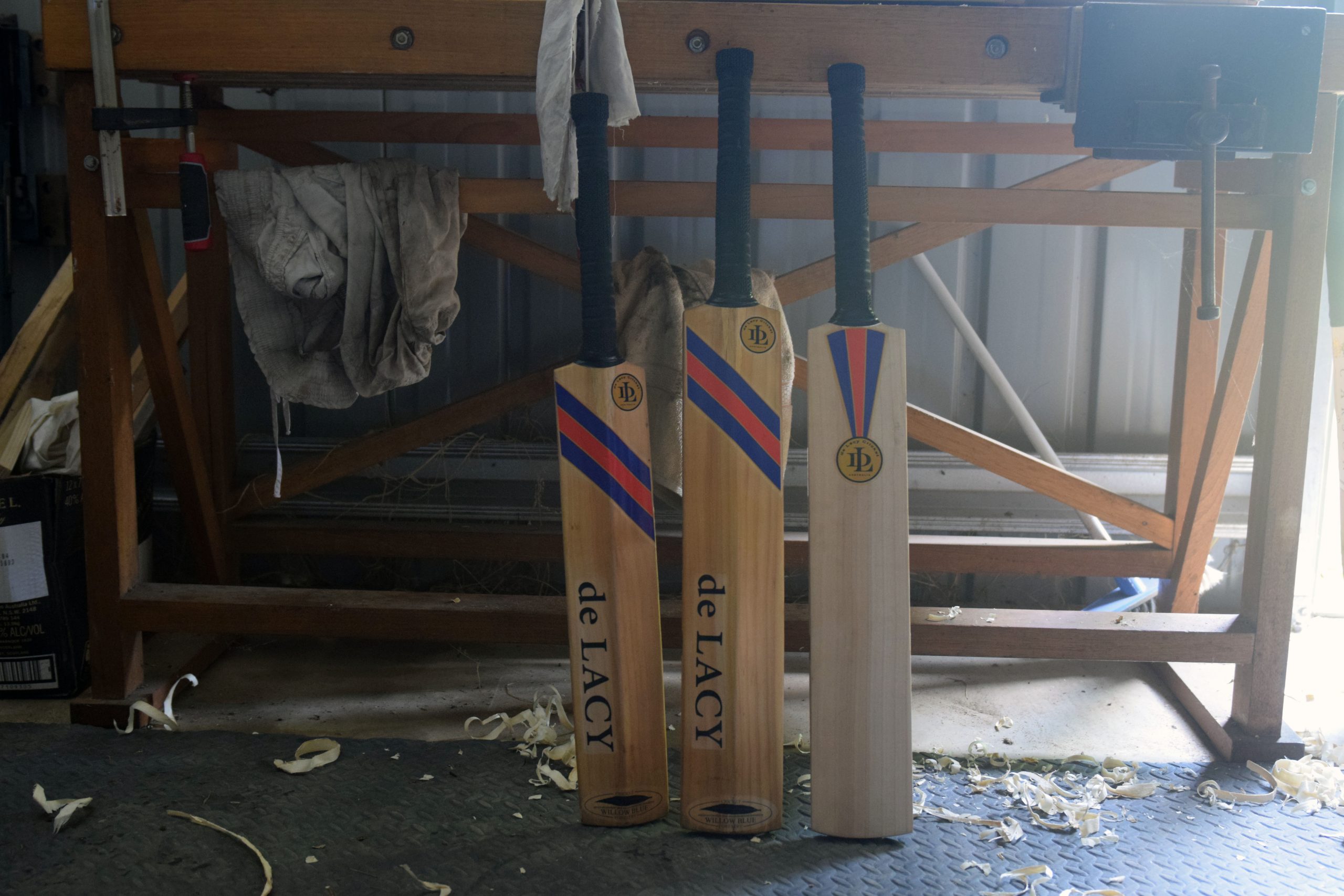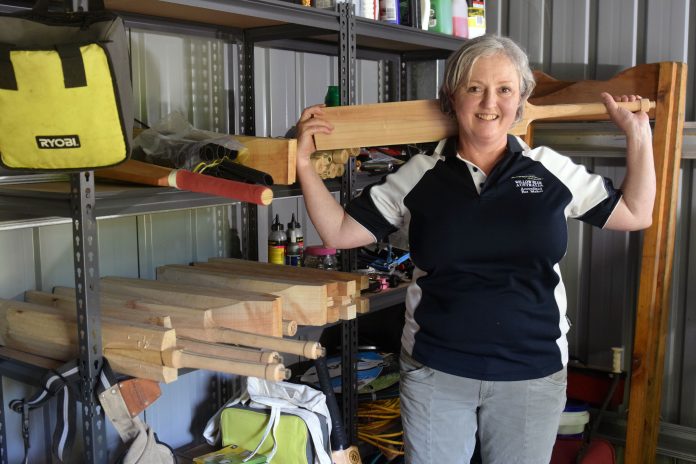
LIAM DURKIN
CRICKET
By LIAM DURKIN
CLARE Johnston may well belong to the most exclusive club in Australia.
The Berrys Creek resident is a cricket bat maker – believed to be one of if not the only female cricket bat maker in the country.
While the playing side of women’s cricket has exploded in recent years and more and more female players and commenters are appearing on television screens, the art of bat making has remained very much a male dominated area of the game.
Johnston however is showing girls can get on the tools, taking clefts of timber and sculpting them into stylish blades used by players across the state.
Better still, some of the timber is grown locally, coming out of a plantation in Sale.
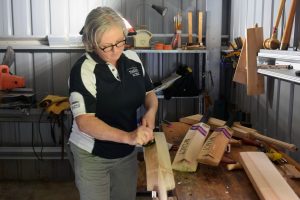
Like all bat makers, who seem to quietly go about their business without attracting much fanfare, Johnston operates out of a shed in the secluded countryside of Berrys Creek, just a short drive from Mirboo North.
Johnston started making bats in 2015, and said her foray into the art came about from a strong affection to the game.
“It was really the love of cricket and being able to put something back in to learn an old craft,” she said.
“An opportunity (to learn bat making) came up, it was advertised in The Weekly Times, I read it and just thought ‘wow that sounds awesome’, the whole idea of making bats for your community and actually being part of the local community.”
Former Australian cricketer Ian Callen showed Johnston the ropes, and before too long, she was an accredited bat maker.
“He spent an intensive week with us and it was really hands on. There was 10 of us in the group and we made two bats in that time, learnt all the skills,” she explained.
Stepping into the quaint workshop that Johnston operates from, one gets the sense it is a place where time does not matter, as each shredded woodchip and coat of linseed oil forms part of the story of each bat that has been meticulously pieced together under her concentrated eye to reflect the person who will ultimately wield it.
This capacity to provide a gift to not only a player but to the game itself was something Johnston said carried a lot of meaning.
“It is a very personal thing, making a bat for a person, I think it is a labour of love” she said.
“You can go out and buy a cricket bat but I think when someone actually makes it for you, you can get that little bit of extra something you need in that bat.
“It is really cool. I’ve seen the girls using my bats in games, it is really lovely to see them being used.”
Starting with a solid piece of English willow timber, Johnston then attaches the bats handle, before using a variety of pull shaves and planes to handcraft the wood into the shape of a cricket bat.
From there, the handle is binded and a rubber grip put on, and finally the stickers, bringing to end a process that takes around eight hours.
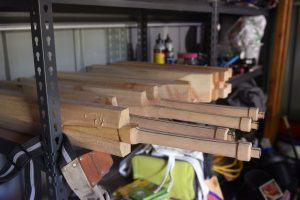
Having been crafting for a few years now, Johnston is hoping to take what is currently a side venture further.
“I’ve made a few bats over the last five years that I’ve been making them,” she said.
“I’ve made some for the women’s cricket teams, one of the young Victorian cricketers, and for a few blokes around the place.
“Now I’m hoping to settle here in Gippsland and make a bit more of a business out of it, I work full time and do this part time, if I can get the bats out there I’d really like to share them with people and if people want to see how a bat is made I’m happy to show that to people.”
Playing for the Mirboo North Cricket Club women’s team, Johnston has noticed a void of bats made specifically for women – something she was eager to help change.
“There is not many women cricket bats out there and that is something I’d really love to work with girls to make better bats for them,” she said.
“We are physiologically different, our muscles are slightly different, so I’d really love to understand that more and work with people to work out what it is that we need to help us.”
Looking at bats throughout history, Johnston can remember a few famous examples, and still has one that is perhaps the most recognised blade from yesteryear – the Gray Nicolls Scoop.
From there a number of innovations in bats have come and gone, with the mid to late 2000s possibly the peak period where bat manufacturers were sent into overdrive with concepts such as graphite and carbon fibre handles.
Although cricket bat these days seem to be made of 10 per cent wood and 90 per cent stickers, Johnston said the same principles when selecting a bat remained.
“Depending on how much you are willing to pay, I think trying to get a straight grain (between eight to 12 grains) and the feel of the bat are most important,” she said.
“If you go out there and understand what it is you like, don’t just go and buy one off the internet, really look for a good piece of timber in the cleft, and see if the handle feels good in your grip.
“It is better to have a nice feeling bat because if it doesn’t feel comfortable you are going to feel awkward playing.”
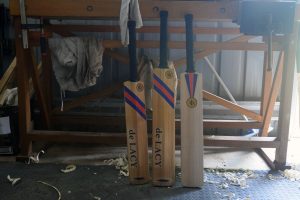
Those with no or limited interest in cricket may be thinking ‘it is just a piece of wood’, but to millions of devotees worldwide, the bat is the one piece of equipment that demands the most scrutiny.
It was said Victor Trumper could pick up any old bat and play equally well with it, however for most players, weight distribution, shape and profile are all important factors in determining which bat suits an individual game.
Truthfully, the bat should be a trusted ally for the player. After all, your bat is going to be by your side in the heat of battle.
Cricket bat ownership transcends further – it can teach kids’ lessons in responsibility as a bat is often the first real possession of value they may have paid for themselves.
For any youngster, there is surely no greater sense of pride than saving up your pennies and buying a brand new cricket bat.
Those looking at the stickers on the bats Johnston creates might recognise the name ‘de Lacy’.
Those in the sports writing game will certainly recognise the name, for the de Lacy in de Lacy Cricket is in fact Hector de Lacy, the famed AFL journalist and direct relative of Johnston.
“My great uncle was Hector de Lacy and he was a sports reporter for The Sporting Globe,” she said.
“He’s recognised in the Hall of Fame at the AFL for his sports writing.
“He taught my dad to play cricket and gave him all his cricket gear and then my dad taught me, so there is a strong tradition of De Lacy’s with cricket.
“It is a bit of a homage to that tradition. The purple, red and gold is the family arms.”
A true sports reporter, de Lacy was noted for his controversial style, and even banned from some VFL clubs, which made him one of the most widely read journalists of his time.
In the 1940s, he campaigned for an increase to player payments, who at the time were earning three pound a week.
Just as de Lacy had helped footballers, Johnston is helping cricketers some 80 years later.
“Bat making is a beautiful tradition and I’m just really happy to have the chance to do it,” she said.
“There are very few of us, I don’t believe I am the only woman in Australia, there has to be somebody else who makes cricket bats, but I feel very privileged to be one of those few women in the world that do make them.
“It is definitely an art form, not many people do it … I don’t know why but I would certainly recommend it as a really nice way to connect to an old craft and to understand how a bat works.”
Those wanting to see the de Lacy range can visit http://www.delacycricket.com/






